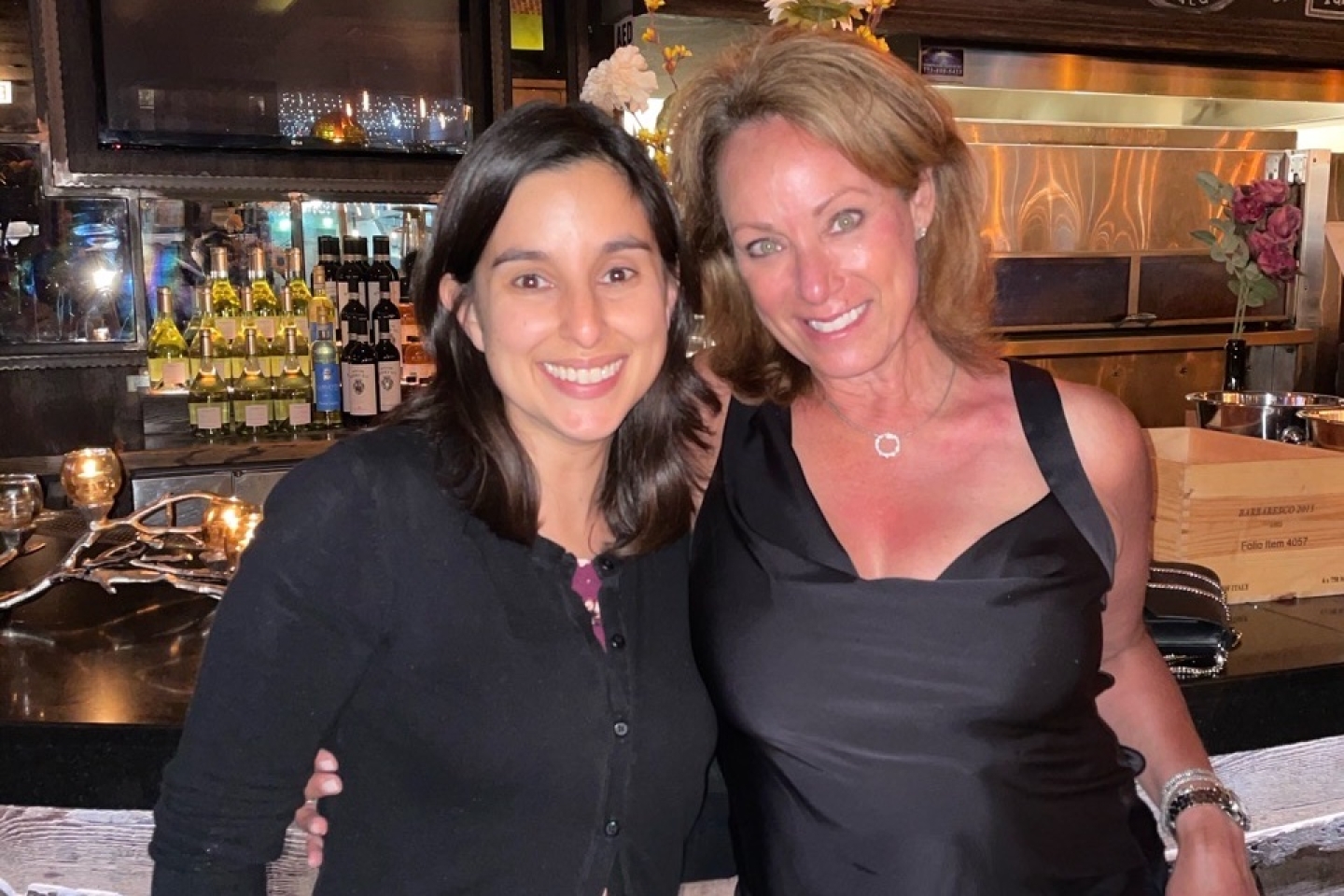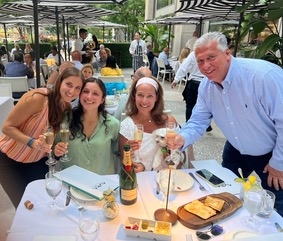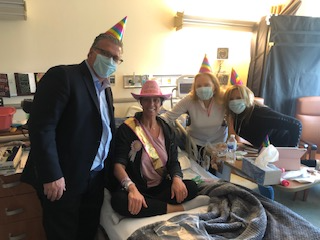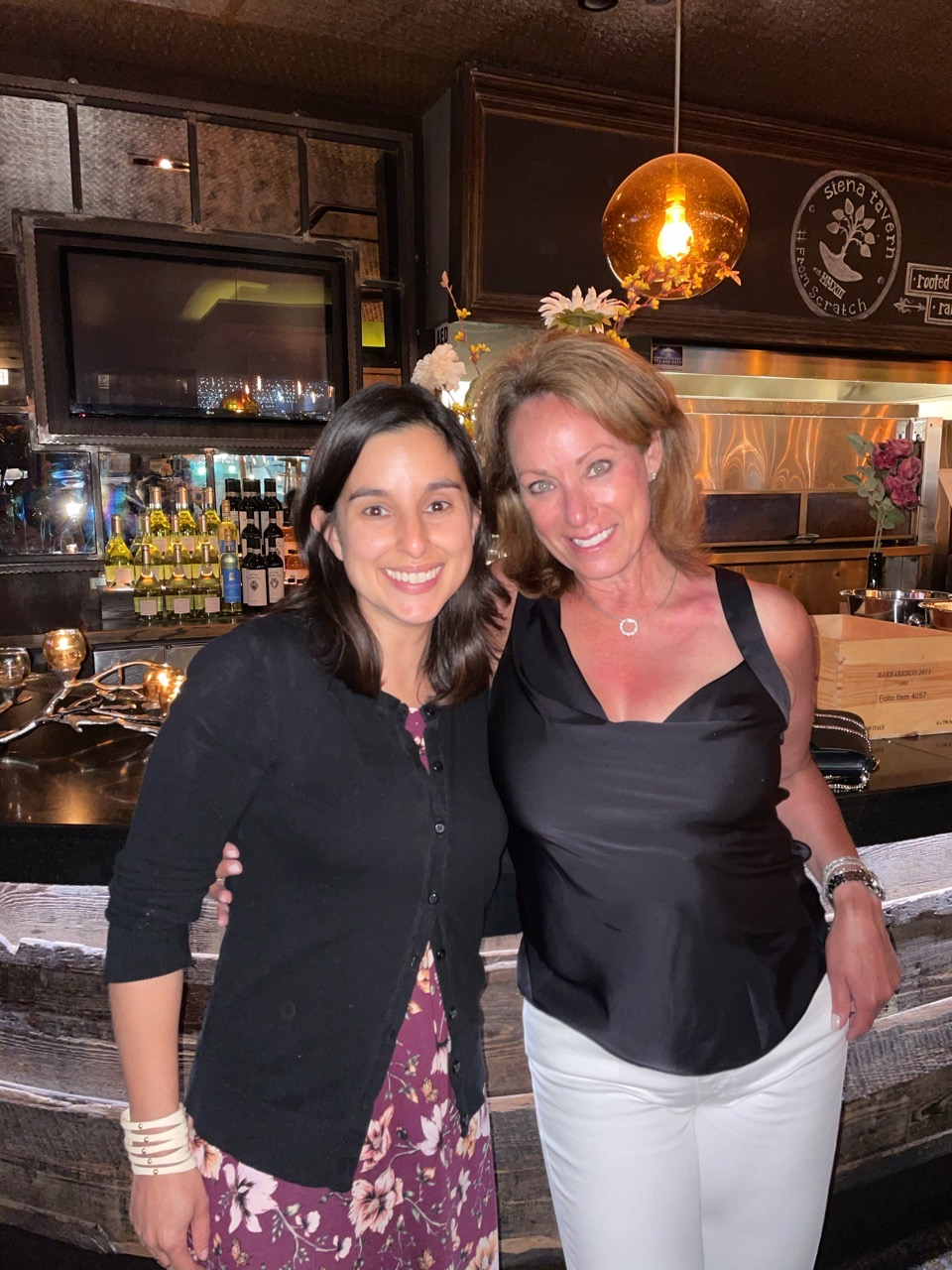
Back in August 2019, Stacy Levy was watching Good Morning America (GMA) with her husband when Dr. Gail Roboz, the Director of the Leukemia Program at Weill Cornell Medicine and NewYork-Presbyterian Hospital, appeared on screen to discuss myelodysplastic syndromes also known as MDS.

Stacy and her family
That TV segment was very top of mind when Stacy was coincidentally diagnosed with MDS just a few days later. “My husband actually had some doubts over the accuracy of my diagnosis, though,” Stacy shared. At his urging, she secured an expert second opinion directly from Dr. Roboz herself.
After the consultation, Stacy and her family left New York to drop their daughter off at the University of Michigan for college. They had just arrived in Ann Arbor when Dr. Roboz called requesting Stacy return for time-sensitive follow-up testing. The urgent tone in Dr. Roboz’s voice left Stacy no choice and she drove back to New York City overnight.
That testing revealed an acute myeloid leukemia (AML) diagnosis rather than MDS. While MDS and AML are both forms of bone marrow cancer, AML is an aggressive form of blood cancer where abnormal white blood cell growth prevents the production of normal blood cells. Approximately 20,000 people are newly-diagnosed each year in the United States and due to its aggressive nature, timely treatment for AML is critical to combat the disease.
Despite the initial shock of being told she had AML, Stacy felt that she was in good hands with Dr. Roboz and fortunate to have avoided a misdiagnosis and mistreatment.
“As part of Stacy’s treatment plan, I recommended a bone marrow transplant (BMT) after initial chemotherapy,” Dr. Roboz shared. “This was the ideal option for Stacy to have the best chance of a prolonged remission and likelihood for cure.”
Together with Dr. Tsiporah Shore, the Associate Director of the Weill Cornell Medicine Bone Marrow and Stem Cell Transplant Program, they created a personalized care plan to combat Stacy’s AML.
“Bone marrow and stem cell transplant allows us to use cells from a healthy donor to replace the faulty factory where the cancerous blood cells are being produced,” explained Dr. Shore. “The success of the transplant depends on the recipient’s immune system not rejecting these new, foreign cells, and so there is an extensive matching and testing process in place.”
The Weill Cornell care team relentlessly worked to identify a suitable transplant donor, but despite an eagerness to be tested, none of Stacy’s friends or family members were compatible. Instead, the team turned to a universal registry through the organization Be The Match. Three possible donors were found in this database, one of whom agreed to go through the process and ultimately helped save Stacy’s life.

Stacy, her husband, her friends on her 'second birthday' party
On the day of her transplant, Stacy’s husband and best friend filled the hospital room with party hats and balloons to celebrate this new chance at life, or as they called it, a ‘second birthday.’ The Weill Cornell Medicine and NewYork-Presbyterian Hospital team joined in on the celebrations and even completed the transplant infusion while wearing birthday hats.
After the procedure, Stacy needed to remain in isolation for 100 days due to her weakened immune system. A Long Island resident, it was a far commute back and forth to NYC for doctors’ appointments, so the hospital provided her with an apartment adjacent to the Weill Cornell campus, even helping to make the space feel like home. “They made it a safe haven,” Stacy recalls fondly.
One-year post-transplant, Stacy arrived at Dr. Shore’s office for her annual check-up when a liaison from Be The Match came in with a sealed folder containing papers that would release her donor’s contact information.
Without hesitation, she signed the forms and called her family with the news. Stacy’s daughters immediately found Stacey’s donor, Annie Snider, on social media, including a photo where she was wearing a University of Michigan sweatshirt – the very same school one of Stacy’s daughters attended.

Stacy and her donor, Annie
“What do you say to the person who saved your life?” Stacy recounted. “I spent hours writing my introductory email, searching for all the right words to capture my gratitude.” Luckily, Annie shared Stacy’s enthusiasm to meet and they scheduled a Zoom call that Thanksgiving.
After Stacy was cleared to travel during COVID, she and her entire family flew out to Chicago to meet with Annie in-person for the first time. The whole experience was extremely emotional, and Stacy still recalls how moving the moment was when they met in person, “The whole restaurant was in tears as we embraced for the first time.”
A few months later, Stacy was waiting to get her phone fixed when she struck up a conversation with the stranger next to her, sharing her journey with leukemia and the experience of meeting her donor for the first time. The person stopped her mid-story and revealed that they worked for Good Morning America and were interested in featuring her story.
Stacy and Annie jumped onto a Zoom call with the GMA team and shared their story with the world via the video segment below: GMA Segment
Today, Stacy, Annie, and their families remain in touch. Stacy continues to share her story, advocating for positivity and perseverance so others feel empowered to seek out the best possible healthcare. Coming up on five years of remission, Stacy works hard to remain an active, happy person, thankful for every moment she gets to spend being alive.
Though her treatment journey is over, Stacy remains grateful to that original GMA segment playing in the background that ultimately changed the course of her care. “That’s become part of my mission,” Stacy concludes. “I want to empower people to get care where they are most comfortable and to feel confident that they are in the best hands. I’m so fortunate to have been treated at NewYork-Presbyterian Weill Cornell and I want to share that with the world.”